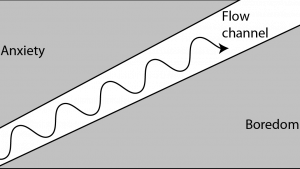Creating a Strong Gacha: How the Pros Make Sure Duplicates Aren’t ‘Bad Drops’
Due to the Star Wars Battlefront II controversy, the industry is taking a far closer look at what monetization practices are ethical, and whether the industry can police itself or needs further regulation to avoid misuse.
In the meantime, it’s likely loot boxes will still be featured heavily in the top charts as the revenue potential of gacha and loot boxes is hard to ignore. Using a random drop system has allowed many new genres and core loops to flourish.
However, designing for gachas isn’t a simple design process. Not all genres and not all types of gameplay can be ported to support a loot box design. We’ve already talked about some of the necessary ingredients:
- Part 1: Ensuring your gacha system has enough depth to sustain drops over time
- Part 2: Ensuring your gacha system has enough width to ensure that each drop is useful to a player
Now, it’s time for the third element: how to handle duplicates. It’s what we call an edge case, but it’s a process that will define how your game will feel over the long haul: Do players feel like duplicates are useful or useless?
Duplicates vs Bad Drops in a Gacha System
The first thing to master when it comes to a gacha system is how to think differently about two situations that can arise; duplicates and bad drops.
For example, let’s assume that we have a Gacha system similar to Overwatch – our boxes only drops cosmetic items. As a result, each item that we drop is permanent (the player keeps it forever and it can’t be “consumed”) and players are chase after the cosmetic items they want for the characters they play as.
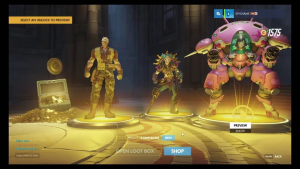
In this system, a ‘bad drop’ could be a cosmetic item for a character that I don’t play as – maybe in the future I will, but for the time I’ve been playing I haven’t taken to the character in question. As such, this is most definitely a bad drop.
Ideally, I should be able to convert this item into something of value so that I can eventually get the items that I want. In games such as Overwatch and Hearthstone, this means converting any bad drop into a dust-currency, which allows you to purchase the items you want directly.
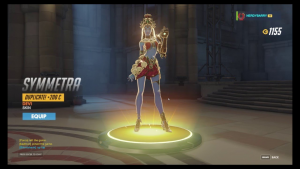
However, also inherent in this system are duplicates. In this situation, I receive the same cosmetic item for a character that I already have, which feels like a big loss. It’s doubly frustrating if the game drops a high rarity duplicate (i.e. a legendary skin) as this feels like a massive waste – I was lucky enough to receive a legendary item, but unlucky that it was an item that had dropped before.
As previously suggested, games like Overwatch and Hearthstone handle this by allowing players to convert these items to dust, essentially treating a duplicate the same way as a bad drop. However, the amount of dust dropped is a fraction of the cost of purchasing the skin you want directly, so players still feel terrible when they pick up a duplicate.
As a result, Overwatch eventually went public about adjusting the drop logic to avoid duplicates as much as possible, while Brawl Stars even removed duplicates outright. However, in my view it doesn’t need to be this way. Removing duplicates from your system reduces depth, and puts more pressure on your team to develop more content. Ideally duplicates would be celebrated by players, making this rare occurrence into something of value, rather than serving as a regretful outcome.
In light of this, let’s look at how to build out better gacha duplicate mechanics:
Six Mechanics for Handling Duplicates
#1 Duplicates Aren’t Duplicates
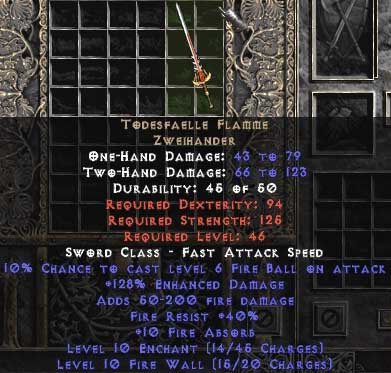
A different way to avoid the pain of duplicates is to make sure duplicates rarely happen.
One way to do it is to make each piece of content generate in many subtly different ways. For example, a weapon or character can drop, but certain sub-elements are randomized and generated.
Using this method, if a duplicate item drops, there are smaller comparisons that players can make between the drops. This is done when gear or drops are both procedurally and randomly generated and there are enough smaller detailed stats that players actively want to optimize.
For example, in the first Destiny you could get the same piece of gear dropping many times.
However, each drop had randomized stats and perks associated with it, causing players to head into a chase in the end game to find unusual builds of gear. The game included perks that offset the problem of some guns being overpowered in competitive modes like The Crucible. While this obviously went overboard causing severe balancing issues, this shows the power of procedurally generated gear – it deepens the chase and makes duplicates something players actively go after.
However, this system can result in players ending up with mountains of weapons and gear that they don’t want to use. As a result, designers need to find ways of converting all bad drops into something of use to players, such as:
- Gold to purchase more weapons
- Dust to re-roll the weapon perks of your choice
- Resources to upgrade the weapons that the player actually wants
While such solutions put the duplicate issue to bed, it also puts more pressure on the bad drop system.
#2 Repair
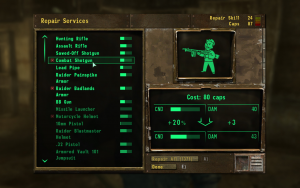
One system that hasn’t been used often is the repair system..
Fallout 3 used this effectively by asking players to collect duplicates to maintain their gear. Have an amazing piece of gear? It will eventually deteriorate and be less effective over time. To repair it, you can pay a large amount of currency or find duplicates of your gear to repair for free. If the deterioration is felt as fair to players, this can create a repeatable grind to find duplicates of your gear to maintain its highest possible gameplay effectiveness.
This system is likely avoided because of the consumable feel that drops from the gacha become: The feeling that an amazing item will drop, but one that’s only useful briefly. It’s a feeling that anyone who played Zelda: Breath of the Wild will definitely find familiar
#3 Fusion (Unlocking Potential)
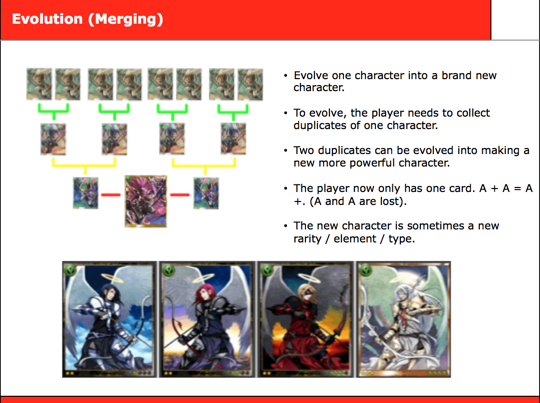
[Source: Both Guns Blazing]
Fusion is the typical way that Japanese and Chinese games have made duplicates relevant. These games typically focus on selling stat improvements over cosmetics, and because of this they focus their duplicate mechanics more on unlocking higher stat growth.
Fusion mechanics are designed in a way that requires the player to receive a duplicate in order to increase the stat potential of a card. As such, while you can upgrade a card up to high level, unlocking the ability to upgrade it even further requires you to “evolve” or “awaken” the card with a duplicate of itself.
When looking at the stacking probability needed to get the highest star rating, it’s easy to see why they do this. You can drive a lot of depth in a gacha system by asking players to chase after duplicates without adding more content.
The problem with this comes in the randomness of the system. Getting a single duplicate becomes so important in this system that players can become very frustrated. Players have no grindable path to unlock the potential for their favourite characters. Hence, designers came up with a new system: Sharding.
#4 Sharding
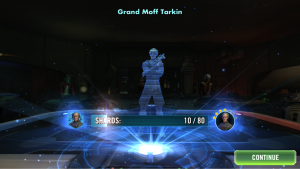
As duplicate systems changed over time, there was a need to make them more flexible and granular.
To solve the issues of fusion, gacha games started to experiment with shards instead of duplicate fusion, best seen in Western Gacha games like Galaxy of Heroes. With shards, each character can’t be unlocked until you have collected a certain amount of shards. In the above example, Grand Moff Tarkin requires 80 shards to be unlocked.
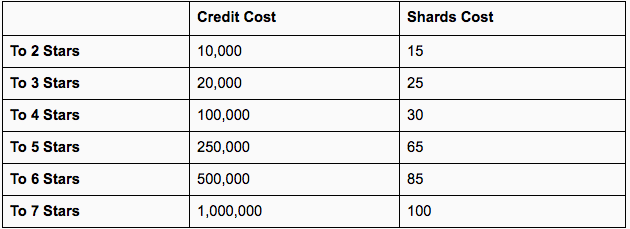
However, that’s just to unlock the character. To upgrade the character to its maximum potential, the player would need to collect additional shards, so “duplicates” are simply just additional shards needed to progress to the maximum potential.
With characters now needing hundreds of shards instead of single drops to reach the maximum characters, games added mechanics which allowed players to grind for specific shards, so players that are looking to upgrade or unlock their favourite character could grind specifically for it. This wasn’t possible with the fusion system before, since giving a single card could mean massive progress for players. In short, sharding allows clear progress.
However, there remains one big problem: opening up a gacha pack you’ve paid for and receiving mere pieces of a character – nothing that you can use there and then. It’s a transaction the player almost always regrets and, as a result, Supercell came up with a workaround.
#5 Unlock & Upgrade
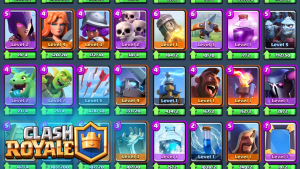
Clash Royale provided a completely new framework for how to handle duplicates. It took the best of the Shard framework, made the handling of duplicates restrictive, yet still has a gacha system that feels fair.
With Royale’s system, each card is unlocked after getting the first card. This feels far better than shards because getting a new card feels amazing – there’s no more paying for “parts of a character”.
After you unlock the card, the card becomes a duplicate sink. In order to upgrade the card, you need to collect a number of duplicates of that card. It removes any needed management of duplicates, while giving a clear path for players to upgrade their cards.
Due to the design, players will unlock cards fairly quickly (you only need one card), but the majority of the chase is after the (thousands) of duplicates necessary to upgrade your cards to a competitive level. This system has significant depth, allowing Supercell to be generous with the cards it gives out, and keep players collecting for years.
However, despite its perks, this design still has disadvantages. For one, Clash Royale has to work really hard to try to ensure that as many cards as useful to players as possible. Otherwise, getting a duplicate for a card you aren’t using is completely useless (the only way to get value from it is to trade it away to clan mates). This works very well for CCG style games, but many games can’t support this level of gacha width – where every item from the gacha is theoretically useful.
#6 Unlocking Better Cosmetics
All these mechanics thus far are primarily focused on handling situations where duplicates give out better stats – they “unlock the potential” of an item so they can be upgraded further. This works great for games that are RPG-based and are comfortable with players speeding up progression (ex. Clash Royale), but most competitive PvP games can’t do this, such as Playerunknown’s Battlegrounds, and League of Legends. Competitive PvP games can really only sell cosmetics. So, how do you add value to duplicates for cosmetic economies?
This is considerably harder, which is why most cosmetic driven games end up allowing players to convert duplicates into dust (ex. Overwatch) or allow players to sell them on a secondary market (ex. Counter Strike: Global Offensive). League of Legends has even dabbled in at first not fully “unlocking” the cosmetic, but only allowing the player to “rent” the cosmetic. Getting duplicates eventually allows the player to convert their duplicates into a permanent item.
However, beyond this, the only thing you can do is make duplicates of cosmetic gear unlock cooler/better visuals of a cosmetic item. In Counter-Strike: Go (CS:GO), they use a “decay” system to do this.
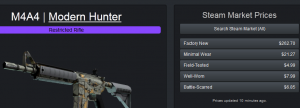
In CS:GO, each item is dropped with a randomly assigned “decayed” attribute. This could mean that the item looks brand new, or is heavily worn down. Getting a duplicate allows players to find items which have far less wear, meaning that players aren’t just chasing that “item”, but also chasing the best looking version of it. The visual differences between “Factory New” and “Battle Scarred” are striking – making the value of having the highest valuable version of the item very important to players that are chasing after cosmetics.
As such, similar to stats, cosmetics can have a “unlocking potential” of their own – you just need to make sure your cosmetic items can have varying degrees of visual quality.
Summary: Duplicates aren’t Bad Drops
In any Gacha system, regardless if you’re just dropping cosmetic items or gameplay impacting items you, as a designer you are responsible for ensuring that there is as little remorse or regret from players – for making sure that each purchase of a loot box feels rewarding to players.
- Gacha depth helps ensure that you can sustain drops from a gacha.
- Gacha width ensures that each item is as useful as possible.
- However, Duplicates are inevitable, and how you handle them is important to achieve the balance between a system that feels fair to players and doesn’t cripple your studio by producing lots of content.
There are seven examples of mechanics you can use to handle duplicates and give them value:
- Dust: Allowing players a path to purchase items they want
- Duplicates aren’t Duplicates: Using procedural generation to have subtle differences between drops
- Repair: Duplicates can power up a previously owned item
- Fusion: Unlocking further potential
- Shards: Breaking fusion up into a more granular path
- Unlock & Upgrade: Unlocking higher stat levels with duplicates, no option for duplicates
- Unlocking Better Cosmetics: unlocking better looking versions of the same cosmetic
Each have their pros and cons, but hopefully can help you decide what is the best path for your game.






